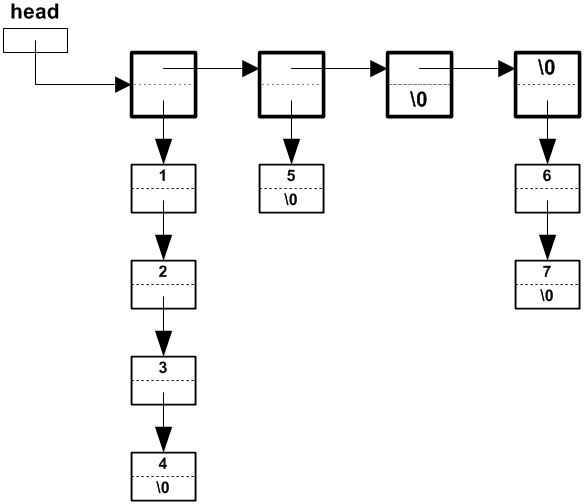struct PNode
{
CNode* data;
PNode* link;
};
// child
struct CNode
{
int data;
CNode* link;
};
Pseudocode (Print Value at Each Node):
if (head == 0) return
create queue q of CNode*
while (head != 0)
if (head->data != 0)
q.push(head->data)
head = head->link;
while ( ! q.empty() )
cursor = q.front()
q.pop()
display cursor->data
if ( cursor->link != 0 )
q.push( cursor->link )

